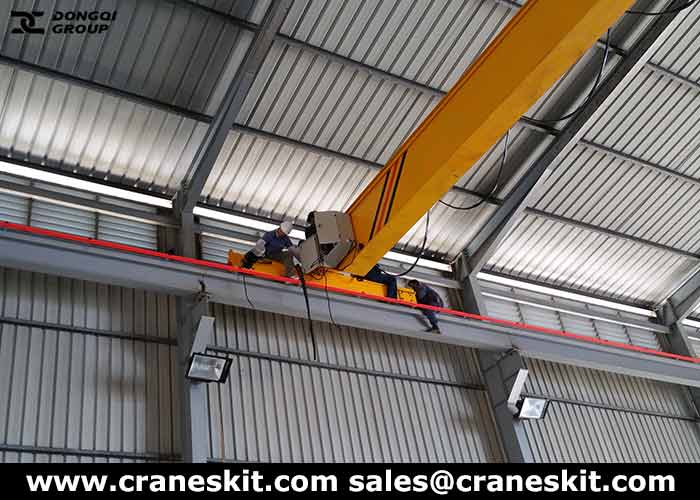Overhead crane runway systems receive constant loading as well as wear forces that create operational and safety issues over time. Therefore, the proper inspection of crane runways and their supporting systems is just as important as the inspections of the crane machine and hoists traveling on them.

Typical inspection of crane runways:
- During a runway inspection, an Inspector performs a thorough visual inspection of the runway supporting structure from the floor to the crane rails including rail and rail fastening system runway girders, girder and column tiebacks, girder seats or stools, bracing, columns and column bases (if applicable), runway end stops, hardware (missing and/or loose) and grout.
- The entire length of both runways must be checked to ensure that deficient conditions don't exist. Each rail attachment hardware component is typically checked to ensure it is not loose and requiring replacement, Typically deficient items or areas will be marked in the field and also noted within the report.
- Racking, inventory and process equipment often makes safe access using a lift impractical or impossible. This requires the Inspector to "walk the runway". In these situations, a properly designed and installed runway fall protection system must be installed, allowing the Inspector to safely travel the length of the runway.
Common Conditions found during and inspection:
- Runways may have been installed improperly with the rails not installed to supplier's requirements.
- Nuts and bolts, as well as other parts of the runway system, can loosen and fall to the ground leading to a safety issue.
- Loosened rail attachment bolt or clips can allow the runway to go out of proper alignment.
- Loose or missing rail splice bars can cause adjacent rails to gap raise, causing wear and tear to bridge wheels and bearings.
- Excessive rail wear can indicate crane alignment issues as well as contribute to wheel wear.
- Rail tiebacks can wear out and break over time causing runway alignment issues as well as potential girder failure.
- Runway girders can develop cracks or other stress-related failure indicators.
- Runway columns can be damaged by mishandled loads or ground-based equipment.
- Runway column bases and shelves can degrade over time and create elevation issues.
没有评论:
发表评论